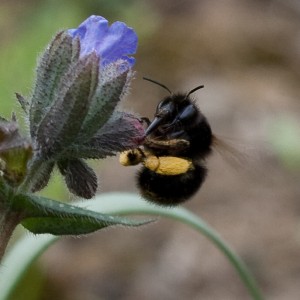OK, another post about bees, and, it is partly an excuse to put another picture of a bee on my blog, but there is a point I want to make. There has been a lot of concern about honey bees and the sudden collapse of hives (often this concern is motivated by the potential disaster for farmers and lost revenues), there has also been some publicity regarding bumble bees, following this I joined the Bumble Bee Conservation Trust, but what about other bees? Other bees I hear you say – well, yes, what about solitary bees. Before this Spring I didn’t really think about other types of bee, but once I started looking at them, the diversity amongst this set of insects becomes quite amazing.
There has been a lot of concern about honey bees and the sudden collapse of hives (often this concern is motivated by the potential disaster for farmers and lost revenues), there has also been some publicity regarding bumble bees, following this I joined the Bumble Bee Conservation Trust, but what about other bees? Other bees I hear you say – well, yes, what about solitary bees. Before this Spring I didn’t really think about other types of bee, but once I started looking at them, the diversity amongst this set of insects becomes quite amazing.
In addition to the tawny mining bee that I mentioned in an earlier post, I have also come across the little chapess in the photo in my garden. Once again I turned to I Spot as I had no idea what this was. She was almost totally black, with a long proboscis and was totally obsessed with my pulmonaria. She is in fact a hairy footed flower bee – what a fantastic name (anthophora plumipes). Both this bee and the tawny mining bee are solitary bees. In this species the females are black apart from their pollen baskets whilst the males are more of a gingery colour. They have particularly long tongues which they cannot fully retract, which is quite noticeable as they hover in front of flowers. Although I have never noticed one before they are quite widespread in the South of England and are common visitors to gardens.
So, now you know, not all bees are bumble bees or honey bees, not all are stripy and (like the tawny mining bee) not all bees sting.